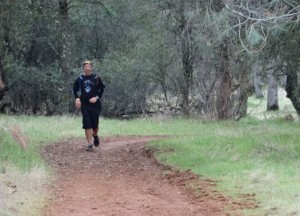As a coach and an athlete, I have learned over the years, that there are two different types of pain.
There is the pain of an obvious injury. These can range from pulls, tears, twists, sprains and broken bones. Concussions and other traumatic injuries fall into this category. You know you are hurt. Everyone knows you are hurt.  You go to the doctor and they take x-rays, an MRI or CT scan and diagnose the problem. Treatment may range from surgery to rest, but it is obvious when you are healed and ready to participate again.
You go to the doctor and they take x-rays, an MRI or CT scan and diagnose the problem. Treatment may range from surgery to rest, but it is obvious when you are healed and ready to participate again.
The other type of pain is from sore muscles, fatigue, or from bad form. The correction for these is to ice, apply heat and/or massage, gentle stretching and keep working. My old track coach would say “Ice it and run.”
The difficulty for athletes, no matter how long they have been competing, is in determining what type of pain it is when there is no obvious incident of injury. Here are some pointers that I hope will be helpful, as I am trying to apply to myself…
If pain comes on suddenly, RICE (rest, ice, compression, elevation). I also suggest heat and gentle stretching. If the pain goes away, gradually work back into your routine. It may be a minor strain or sore muscles (if you have not been working out for some time). If the pain does not go away in 48 hours, see a doctor.
If pain comes on gradually and gets progressively worse, stop! See a doctor.
Often you will find that the doctor will give you the same RICE recommendation, or some such similar. However, if it is a serious injury, you may make it worse by continuing to work on it. Which leads me to questions to ask your doctor…
1) What is the nature and severity of the injury?
2) What treatment or therapy should/can I do?
3) How long am I out for?
4) Will it get worse or prevent it from healing if I continue to train?
I am currently nursing a severe deep tissue and bone bruise on my knee from a fall while running. I had the advantage of knowing exactly when I got hurt. I saw me fall. I knew where it hit. I suspected it was a bad bruise. However, it was taking longer to heal than I thought it should. I went to the doctor who did an exam and said that an MRI would not be necessary because there was no indication of muscle damage. The x-ray showed no bone damage either (despite the physically detectable dent in my patella), so my self-diagnosis was confirmed: deep tissue and bone bruise. It could take months to stop hurting, but running could do no further damage, nor would it prevent or delay healing. I can run as long and as hard as I feel able. I have to learn to push through the pain.
From Lawrence of Arabia:
William Potter: Ooh! It damn well ‘urts!
T.E. Lawrence: Certainly it hurts.
Officer: What’s the trick then?
T.E. Lawrence: The trick, William Potter, is not minding that it hurts.
Since running is a metaphor for life (at least to me), this made me think about the types of emotional pains we all go through.
Some pain may be incapacitating. It may be for a time or for a lifetime, like a career ending knee injury. We may need help to heal. We may need time to heal. We may never heal. Sometimes we simply have no choice but to push through the pain. Sometimes we just can’t. If we need help, we have to get help. Emotional pain is just as real as physical pain. Trying to push through daily life with serious emotional injury is as bad for us as trying to run a marathon with a broken foot.
Truth be told, the biggest difficulty is in trying to determine what kind of pain it is.
